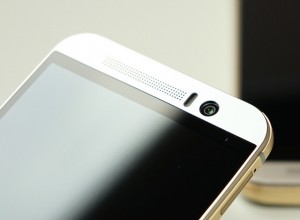Looking back at mobile marketing in 2015, the stand out programs featured innovative efforts to create immersive experiences that were able to connect with audiences.
Mobile marketing programs are featuring increased levels of sophistication in their approach and in 2015 we saw some trends stand out from the rest. Take a look at these before starting your next mobile app development project and see if any of these can be used to improve your initiatives.
1. Omni-channel Strategy
Top mobile marketing campaigns in 2015 tied in with other channels, being supported by social and other media channels.

Today’s omni-channel consumer wants everything to be readily available at his or her fingertips | Photo: Kārlis Dambrāns (Flikr)
Today’s omni-channel consumer wants everything to be readily available at his or her fingertips and expects a similar brand experience regardless of the channel. To illustrate the importance of how mobile fits into the shopping experience consider that 80% of shoppers check prices online and that a third will access price and other information on their mobile device while inside the physical stores [MIT].
Your mobile marketing should leverage social and other channels, creating a seamless experience for you customers. Use your print ads and social pages to drive users to your app.
2. Build Relationships
Top mobile marketing campaigns used mobile to build relationships with customers. In fact, improving brand experience and increasing engagement is one of the most common goals of these campaigns.
When it comes to mobile apps, engagement often starts and stops with push notifications. If you can get your users to opt-in to push notifications and stay opted-in you will see sizable improvements in engagement. App users who receive push notifications are 4 times more engaged than those that don’t. Additionally, the are twice as likely to be retained.
One of the key driving factors here has been improvements in personalized communication.
3. Social Sharing
In 2015, top mobile campaigns made good use of social to enhance interactivity. Did you know that consumers are more likely to share via a mobile device than their PC by a margin of 2 to 1?
Humans are social creatures and love to share. Take advantage with this with your mobile marketing campaigns and create campaigns that users will want to share.
4. Augmented Reality
Technological innovations are helping push augmented reality and enhancing the use of AR as a marketing trend.
An example of this would be Volvo’s virtual reality app that allowed users to virtually test drive the new XC90 using Google Cardboard before it was available. The campaign was wildly successful, creating over 40,000 app downloads that generated more than 34,000 leads. When the XC90 hit the showroom, the entire run of the XC90 sold out in less than two days.
Looking Forward
Looking forward to 2016, expect to see businesses use micro-videos such as Vines as part of campaigns where they tell a longer story.
Micro-videos are ideal for the mobile format. Make sure to take advantage of that opportunity. Remember that a different approach to video production and story telling will be required here.


